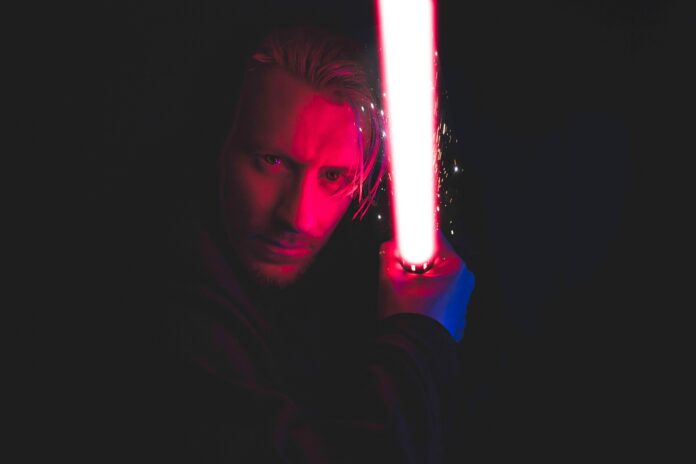When it comes to the most iconic cinematic weapons of all time, the Star Wars lightsaber definitely ranks at the top. The Hi-Tech plasma-filled energy sword immediately captured the imaginations of fans when it first appeared in Star Wars Episode IV: A New Hope.
All fans of the franchise are quite versed in some of the basic details about the lightsaber, like how it is a standard issue weapon for Force-sensitive warriors (both Jedi and Sith) or how it can cut through almost anything or how the Sith lightsabers are characteristically red while the Jedi are blue and green (although, later on, the franchise did introduce more lightsaber colours like orange, yellow, purple, silver/white and even the Darksaber).
While all these basic pieces of information are well known by fans, many do not know about the story behind the creation of this iconic weapon, which is why in this article, we shall be taking a look at how the lightsabers were created for Star Wars.
Inspiration & Early Designs
The creators of the lightsaber likely took inspiration from several different early sci-fi works that featured laser swords as a concept. The film’s creator, George Lucas, even credits a Harry Harrison (American science fiction writer) story that came with a drawing of a laser-sword duel. Although the idea for the lightsaber was clearly inspired by an assortment of sci-fi inspirations, the lightsabers that made it to our screens were nothing identical to those earlier works.
The original concept of the lightsaber depicted it as a plasma-filled energy weapon that was just as common as a blaster. Essentially, it was a sword to match the guns used in the Star Wars universe; however, later drafts made the lightsaber more special. In terms of design, the original drawings depicted the lightsaber as fairly small (too small to be held with both hands), resembling a flashlight with a distinctive grey-white beam and a bulb-like protrusion at the blade’s beginning. Vader’s saber even featured a blue beam in the initial drawings. These early drafts did, of course, serve as the basis for the lightsaber’s eventual design.
Crafting The Props
When the time came to build the lightsaber, set directors Roger Christian and John Stears were entrusted with the first design. For Luke’s lightsaber, the handle of the hilt started as the flash on a classic Graflex press camera. The cylindrical rod was the basis of the design. The designers then proceeded to add the T-track of a cabinet to the tube. A variety of random surface details were also added with glue. George Lucas also suggested the idea that a belt clip be added to the weapon for easier travel, and with that, the very simple hilt was ready for shooting. There are now several companies like Padawan Outpost who supply lifelike combat sabers.
The lightsabers used in the original trilogy were mainly built with found objects, and that is what gave them their distinct sci-fi appearance. Subsequently, the lightsabers used in the prequels were carefully moulded in resin and machined from metal materials for use on screen.
Achieving the distinctive glow of the lightsaber was one of the hardest parts of the lightsaber’s creation. The crew originally wanted the weapon to have a glow that could only be seen on camera. However, they had to forgo that idea. This was because the early lightsaber design featured a three-sided wooden dowel coated with retroreflectors (much like the material used to make street signs visible), and the success of the technique will be dependent on camera orientations that just weren’t feasible as certain shots would have revealed the wooden blade’s true form.
As a solution, Nelson Shin (an animator), who worked on practical effects for the lightsaber, created the lightsaber’s distinctive glow with a rotoscope by carefully drawing every action of the weapon over the live-action footage.
Modern-day lightsabers now feature blades that are covered in chroma-key material, and their glows are added by visual effects teams following production. For more explosive duelling scenes, a “duelling blade” made from polycarbonate is used. It was Shin who also suggested that the lightsaber be given a distinctive sound. The sound was later crafted by Ben Burtt (a sound designer) by combining the sound of interference of television sets on microphones and the sound of old film projectors.
Conclusion
The lightsaber is a highly important prop in the Star Wars franchise, and the creative collaboration behind its creation only serves to add to its uniqueness. Hopefully, this article has given you some insight into how one of the most iconic sci-fi weapons was created.

| [donate]
| Help keep news FREE for our readersSupporting your local community newspaper/online news outlet is crucial now more than ever. If you believe in independent journalism,then consider making a valuable contribution by making a one-time or monthly donation. We operate in rural areas where providing unbiased news can be challenging. |

















